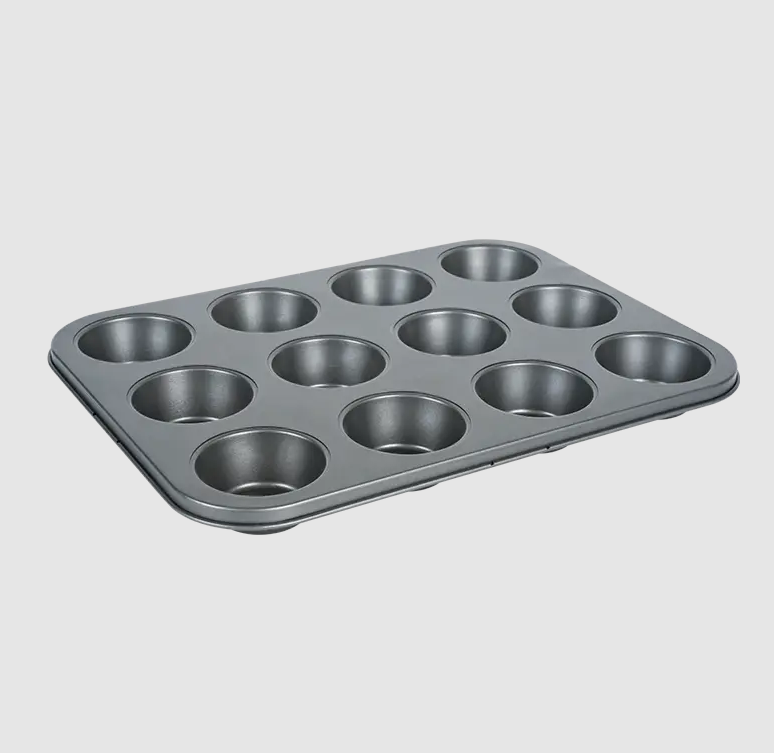Muffin pans are a fundamental tool in baking, widely used to prepare muffins, cupcakes, and other small baked goods. One important aspect that affects their performance and longevity is their ability to withstand high temperatures in the oven. The heat resistance of a muffin pan is critical to ensure even baking, maintain structural integrity, and guarantee safety during use.
Most muffin pans are made from materials like aluminum, stainless steel, carbon steel, or silicone. Each of these materials has different heat tolerance levels, which directly influence the pan's durability and baking performance. For example, aluminum muffin pans are known for their excellent heat conduction and ability to evenly distribute heat across the surface. This property allows baked goods to cook uniformly without hot spots. Aluminum pans can typically tolerate oven temperatures up to about 450°F (232°C), making them suitable for most baking recipes.
Stainless steel muffin pans offer great durability and corrosion resistance. However, their heat conduction is generally lower than aluminum, which might cause slight variations in baking times. Stainless steel pans also usually withstand high temperatures, often rated up to 500°F (260°C) or more, depending on the manufacturer. Their resistance to warping or bending under heat stress is another advantage that contributes to their long-term usability.
Carbon steel muffin pans often come with a non-stick coating to improve the release of baked goods and simplify cleaning. This type of pan also exhibits good heat resistance, typically up to around 450°F (232°C). However, the non-stick coating can degrade if exposed to excessive heat or scratched, reducing the pan’s overall durability. It is important to follow the manufacturer’s recommended temperature limits to maintain the integrity of the coating and ensure safe usage.
Silicone muffin pans are flexible and popular for their non-stick properties. While they offer ease of use and are generally heat resistant, they usually have a lower maximum temperature rating compared to metal pans, often up to 428°F (220°C). Silicone pans are less likely to warp or rust but may not provide the same level of heat conduction, sometimes leading to slightly longer baking times.
In practical baking scenarios, muffin pans are rarely exposed to temperatures exceeding 450°F. Most muffin or cupcake recipes call for baking temperatures between 325°F and 400°F, well within the heat tolerance of most quality pans. Proper heat resistance ensures that the pan will not warp, discolor, or degrade, which in turn helps maintain consistent baking results.
The pan’s construction quality and thickness also affect its heat resistance. Thicker pans tend to withstand heat better and distribute it more evenly, while thinner pans may warp or discolor more easily. Additionally, pans with reinforced edges or coatings designed to withstand high temperatures tend to last longer under regular baking conditions.
In summary, muffin pans generally possess sufficient heat resistance to handle typical baking temperatures. Their performance at high heat depends on the material, construction quality, and coating integrity. Selecting a muffin pan made from durable material with appropriate heat tolerance ensures even baking, long-lasting use, and safe handling during high-temperature baking processes.
